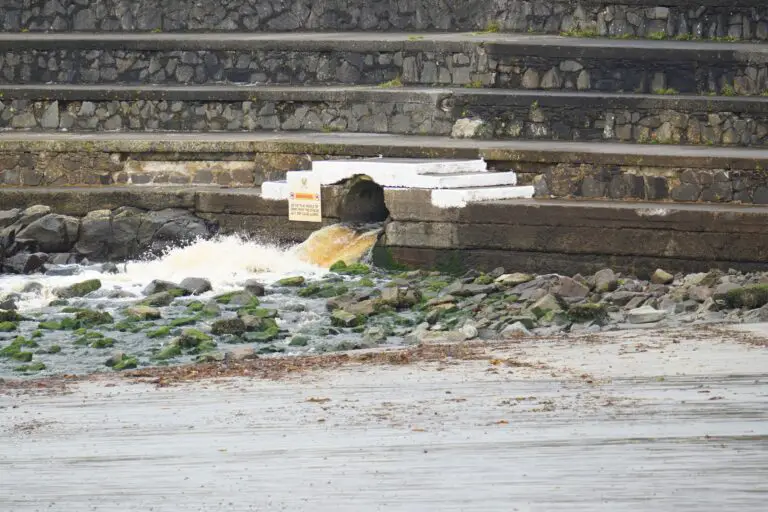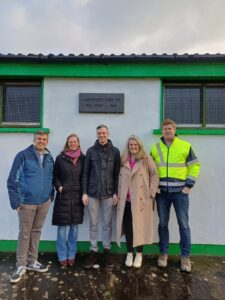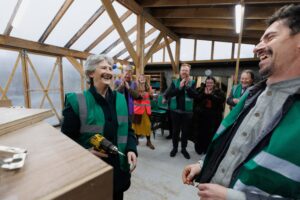*Photograph: John Mangan
CLARE COUNTY Council has told Uisce Éireann that its planned waste water treatment plant (WWTP) for the seaside town of Kilkee would have “adverse impacts” on the visual amenities of the area and character of the local landscape.
In a setback for Uisce Éireann’s contentious plans, the Council has questioned Uisce Éireann’s location choice for the WWTP and also the level of treatment that it is to be provided by the plant.
Locals have campaigned for many years for proper waste water treatment facilities for Kilkee but over 80 objections have been lodged against the proposed scheme for Dunlicky Rd with locals angry over the proposed location and that Uisce Éireann is proposing only primary treatment of waste water.
As part of the wave of opposition against the proposal, Kilkee resident, Sheila Lardner has branded the WWTP as a “proposed monstrosity”.
Now, taking on board locals’ concerns, the Council state that the proposal is in close proximity to a “Heritage Landscape” and that the Dunlicky Rd also forms part of the Wild Atlantic Way, the EuroVelo Cycle route and is popular with walkers using the Kilkee Cliffs pedestrian path.
As a result, the Council has asked Uisce Éireann to submit a detailed rationale for locating the proposed WWTP at Site B and the technical engineering wastewater treatment requirements for locating the proposed WWTP at the current proposal site.
The Council also points out that Kilkee sees significant increases in population during the peak Summer months to 15,000 and point out that the maximum design capacity of 7,926PE.
The planning authority state that it is unclear to it how this loading for a population of 15,000 would be adequately accommodated within the current proposal.
The Council state that therefore Uisce Éireann is required to outline how the development as proposed, with a stated maximum capacity of 7,962PE would meet the requirements of these loadings.
The Council state if a redesign of the proposed WWTP is required to accommodation a population in excess of 10,000, it would exceed the threshold for the provision of a mandatory Environmental Impact Assessment (EIA).
The Council that in the event that the threshold of 10,000PE is exceeded, an EIAR should therefore be carried out and submitted to the Council.
The planning authority has also expressed concerns for potential adverse impacts on a number of dwellings and mobile homes due to the close proximity of the planned Pumping Station and has asked Uisce Éireann to address these concerns.
One of those to object, Michael Duffy on behalf of the Dunlicky Rd Residents Group in Kilkee has described the proposal as “a disgraceful waste of scarce public resources” and will be an “open wound and eye-sore” on the local landscape.
Mr Duffy contends that “this application is an ill-considered, expensive, boxticking exercise by the applicant which simply wants to be seen to be taking steps, no matter how inappropriate, to address its historic inability to provide a basic and fundamental requirement for planning and sustainable development in a long established important tourism town”.
Mr Duffy states that “this 10 year application, even if appropriate, which it is not, will not stop many more years of restrictions on Kilkee residents, businesses and visitors”.
He contends that “if a private enterprise was causing such disruption it would be closed immediately and the matter properly resolved. The Applicant is unanswerable to anyone”.
He said, “It is unconscionable, in this day and age, that a new WWTP would be designed for primary treatment only. Would a private householder be permitted to discharge primary effluent from a septic to coastal waters”.
The application will become ‘live’ once more after Uisce Éireann has lodged the further information requested.











